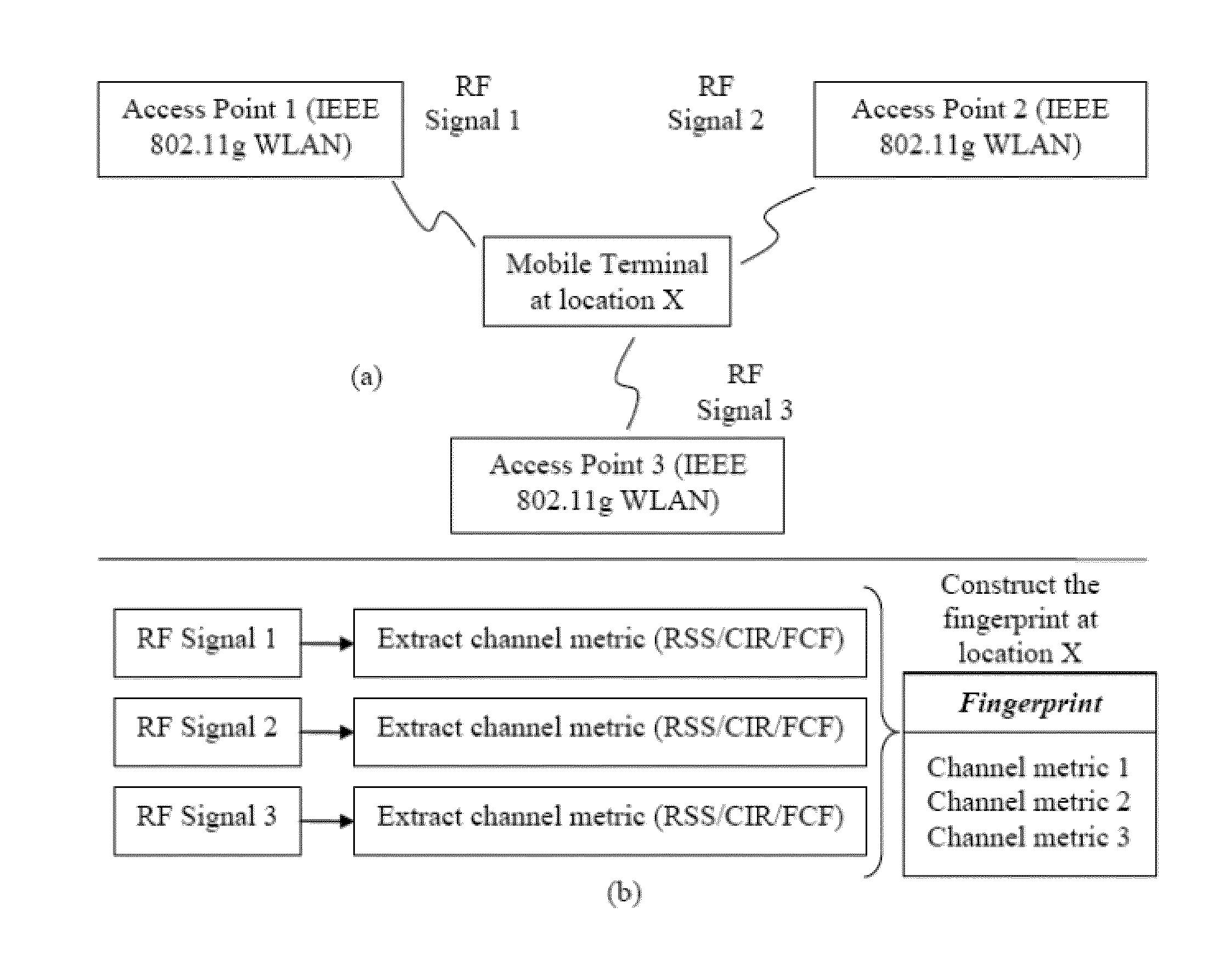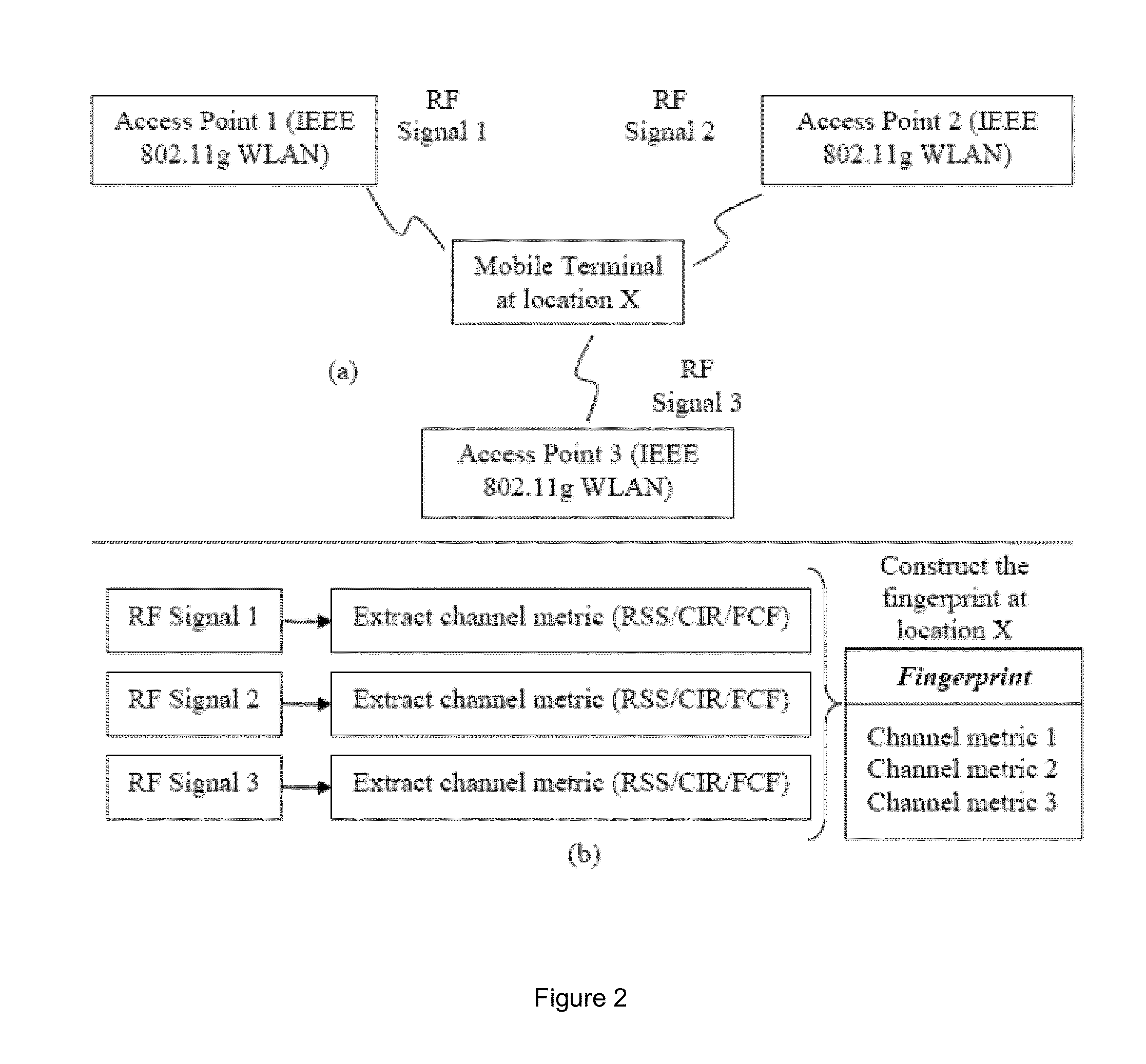Method and system for localization
a technology of localization and method, applied in the field of method and system for localization, can solve the problems of inability to exploit additional spatial information, inability to extend the success of gps to indoor environments, and inability to identify fingerprints in two locations. uniqueness and precision
- Summary
- Abstract
- Description
- Claims
- Application Information
AI Technical Summary
Benefits of technology
Problems solved by technology
Method used
Image
Examples
Embodiment Construction
[0047]Aspects of the present invention seek to provide a novel location fingerprinting technique that provides a more robust fingerprinting structure which reduces computation complexity and storage requirements.
[0048]Preferably these objectives are achieved by methods and systems which efficiently capture channel information in order to uniquely and robustly locate the receiver but significantly reduce the computational and storage requirements.
[0049]Accordingly, at its broadest, a first aspect of the present invention provides a method of locating or localizing which makes use of an entropy estimation of a function of one or more communication channels between a mobile or wireless device and an access point.
[0050]A first aspect of the present invention preferably provides a method of locating a wireless communications device, the method including the steps of: calculating an estimate of the entropy of a function of the wireless communications channel between the wireless device an...
PUM
 Login to View More
Login to View More Abstract
Description
Claims
Application Information
 Login to View More
Login to View More - R&D
- Intellectual Property
- Life Sciences
- Materials
- Tech Scout
- Unparalleled Data Quality
- Higher Quality Content
- 60% Fewer Hallucinations
Browse by: Latest US Patents, China's latest patents, Technical Efficacy Thesaurus, Application Domain, Technology Topic, Popular Technical Reports.
© 2025 PatSnap. All rights reserved.Legal|Privacy policy|Modern Slavery Act Transparency Statement|Sitemap|About US| Contact US: help@patsnap.com



